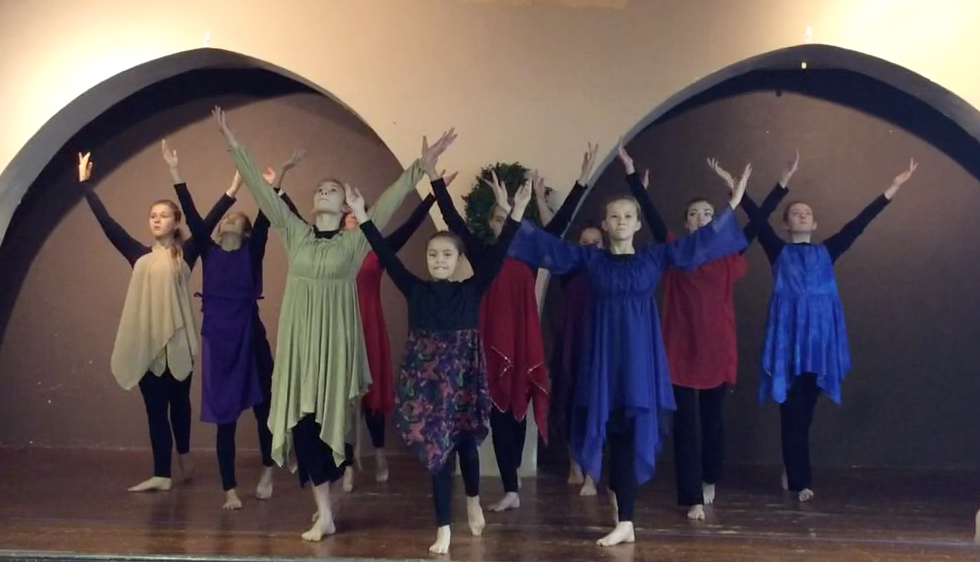My friend, Marcia Cody of Highest Praise Dance Fitness says, “Worship is not a spectator sport.” In my church, when the team dances, the congregation watches. They are blessed through this ministry, and our prayer is that we embody their worship, giving voice and movement to it. But this Sunday, I had the privilege of inviting the congregation to join me in moving in worship. I had asked my pastor, who is also my husband, if I could share a dance at our end of year worship service. He responded with an amazing invitation and suggestion: “Here’s another thought – what if you shared a 5-minute testimony/teaching in terms of what worship dance means to you and the other dancers? It could include some dance movements but would equip and inspire the congregation to use their bodies in private and public worship”
This was an amazing invitation because this would be totally new for our congregation. We are not a hand-raising, dancing congregation. We have a congregation of amazing servants, people who love Jesus, serve Him, and show their love for Him by loving each other in tangible ways. As Presbyterians, we value the life of the mind, and as a group, our congregation is more wary of very emotional or physical displays of affection in worship. Even having a team of dancers present worship dances is a stretch for some. So, to invite them to join the dance was entering new territory. I knew this was what God would want from me. Jocelyn Richard says that we know we are successful in worship dancing when the congregation joins the worship. So, I set aside the dance that I had on my mind and prayed about a worship song that was familiar to our congregation and lent itself to simple movements.
Here are five things I found helpful in inviting the congregation to move that can help you when you lead your congregation in movement: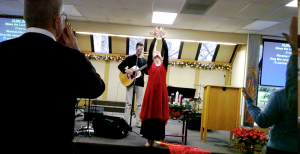
1. I began with a brief teaching. During the service, my pastor gave me five minutes to share a testimony of how God has worked in my life through dance over the last year and to do a very brief teaching on the biblical basis for dance in the bible and how dance has impacted my relationship with the Lord. Sharing the biblical basis for dance helped open their minds to something new. Shared my own story helped open their hearts.
2.I chose a song that was familiar to the congregation and lent itself to movement. I didn’t want them to be focusing on learning new words or new music. We used a song we have worshiped to many times over.
3. I choreographed simple movements to the chorus for the congregation. Simple is the key. Lynn Hayden of Dancing for Him Ministries says, in her video “Corporate Worship” that when leading corporate worship, our movements should be simple, repetitive, and predictable (in contrast to choreographed movements for solos or for a team). I had to discipline myself to keep the motions simple. Even so, when I asked my husband how the experience was for him, he said, “Good, but I find I have to really concentrate to remember what to do.” That was a huge lesson for me for next time. Even what feels simple to me (and the enemy tells me is too simple, will be boring) is a stretch to someone learning it for the first time and wanting to worship as they do something new. So, keep it simple.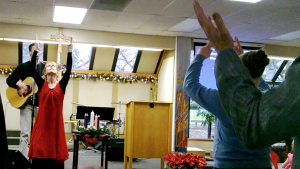
4. I taught the movements to the congregation and explained what they meant. As I taught each gesture, I briefly told what we are saying (ie, “We put our hands by our mouth and extend them outwards, taking God’s blessing and releasing it,” and “We lift our hands up to the Lord as an expression of offering ourselves to him.”). A couple of people told me afterwards that this was an important part for them, that they appreciated knowing what the movements meant.
5. I danced the verses myself. This was at the suggestion of my friend and prayer partner Jennifer Bodde. This kept what I needed the congregation to do short and simple, and allowed for a time for them to receive ministry through the dance as well.
It was such a joy and a privilege to be able to share dance in this way with my congregation. A friend approached me afterwards, whom I didn’t know had any interest in dancing, and told me that she wants to attend a workshop I am holding in February in my church. It reminded me that while there are those for whom dancing is a stretch, there are also those waiting for an invitation to join in dance.
What are your experiences in leading your congregation in movement? Please share in the comments.
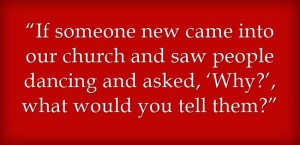 This past weekend, I was blessed with the opportunity to meet with the Pastor and the Children’s Ministry Director my church. They had gathered several people who love dance to discuss the possibility of incorporating dance at our church, beginning with children.
This past weekend, I was blessed with the opportunity to meet with the Pastor and the Children’s Ministry Director my church. They had gathered several people who love dance to discuss the possibility of incorporating dance at our church, beginning with children.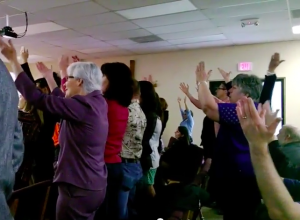 During the discussion, my Pastor turned to me and asked,“If someone new came into our church and saw people dancing and asked, ‘Why?’, what would you tell them?”
During the discussion, my Pastor turned to me and asked,“If someone new came into our church and saw people dancing and asked, ‘Why?’, what would you tell them?”
